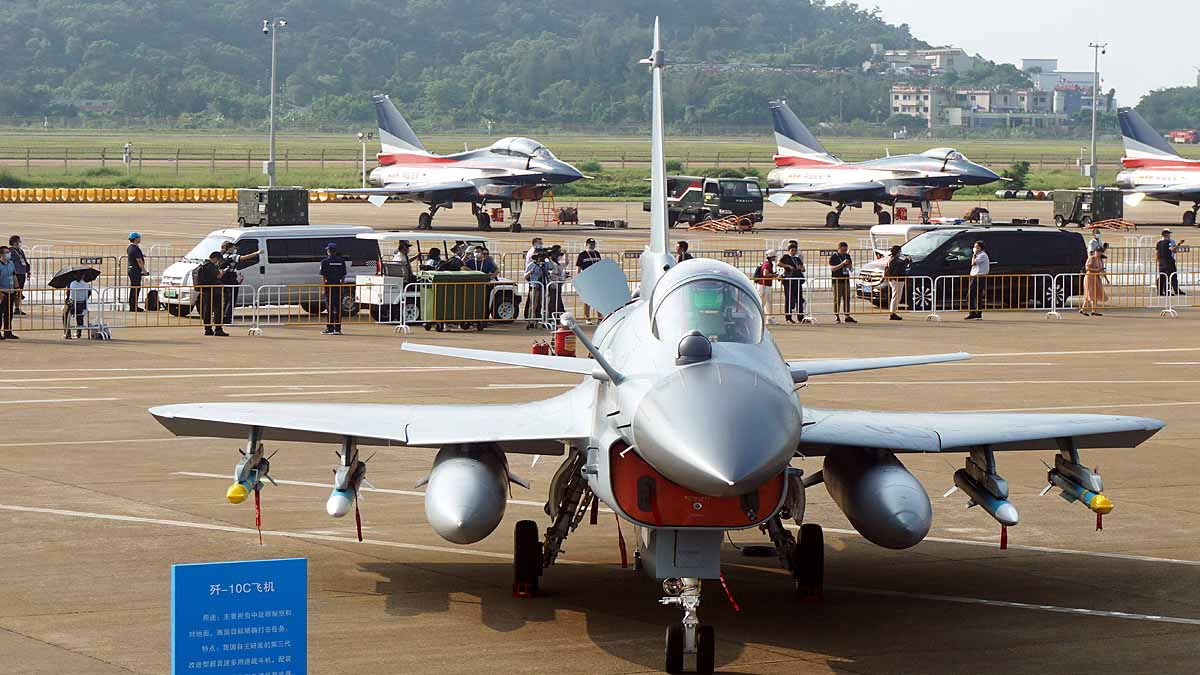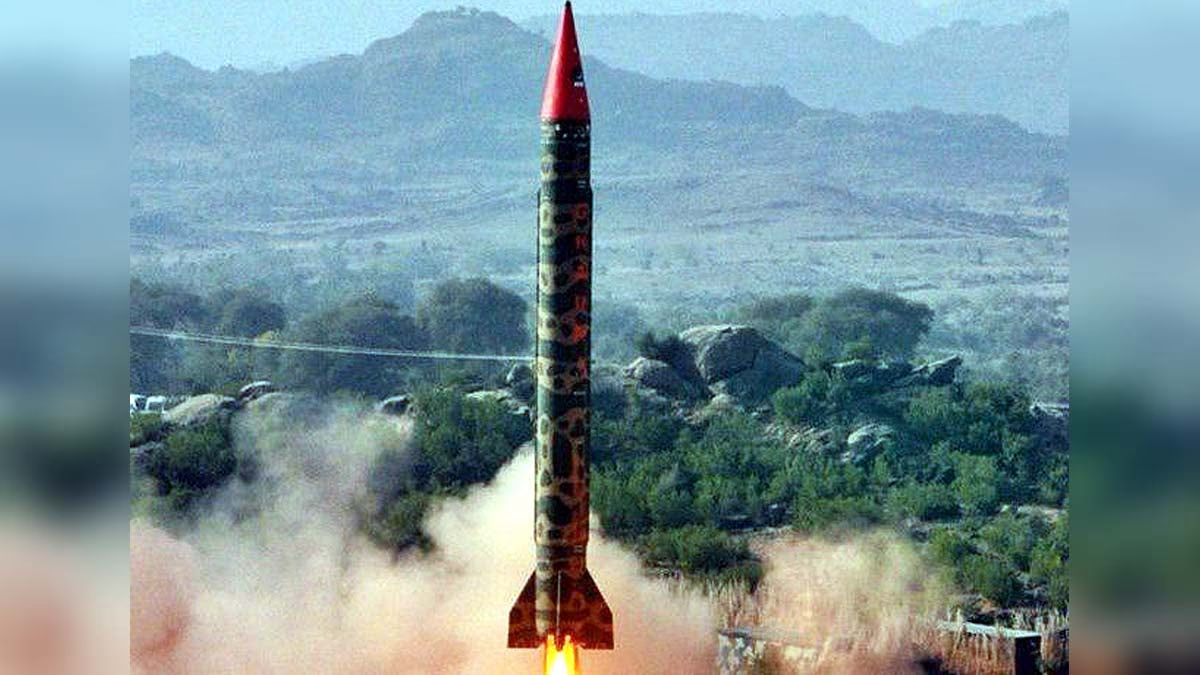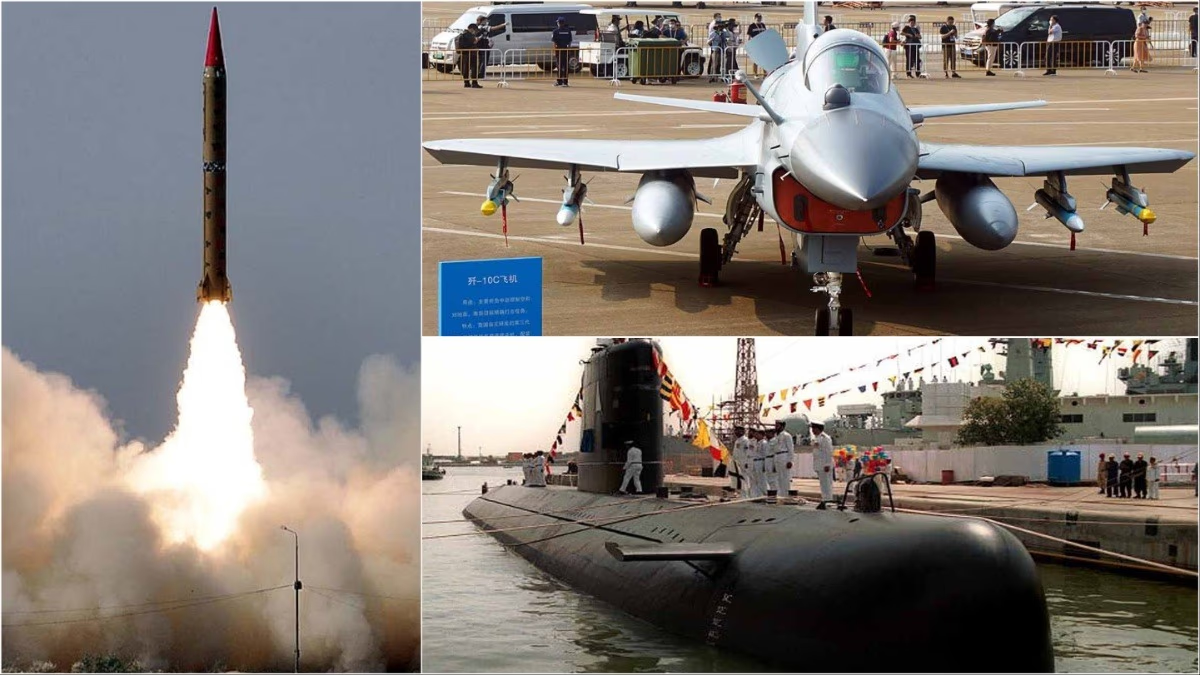Operation Sindoor stands as one of India's most robust anti-terror campaigns, showcasing India's determination to combat terrorism and sending Pakistan a clear message that nuclear threats will not be tolerated.
During a visit to Srinagar, Defense Minister Rajnath Singh highlighted Pakistan's irresponsible handling of nuclear weapons as a pressing global issue. He called upon the International Atomic Energy Agency (IAEA) to investigate Pakistan's nuclear arsenal. An American intelligence report suggests Pakistan is strategizing to enhance its stockpile of nuclear weapons.
Read More:

Source: aajtak
Operation Sindoor: A testament to India's successful anti-terror actions, conveying a stringent message to Pakistan that terrorism and nuclear threats will not be tolerated.
Defense Minister's Warning: Rajnath Singh questioned Pakistan's irresponsible nuclear stance, urging an IAEA investigation.
Pakistan's Nuclear Arsenal: Around 170 nuclear weapons as of 2023, including air, land, and sea missiles.
U.S. Intelligence Report: Pakistan's plans to enhance its nuclear armaments raise global concerns.
India's Strength: Through Operation Sindoor, India weakened Pakistan's air force using BrahMos and other missiles.
Operation Sindoor: A Decisive Indian Counteraction
Operation Sindoor launched on May 7, 2025, was India's retaliatory strike following a terrorist attack in Pahalgam, Jammu and Kashmir, on April 22, which claimed 26 lives. India linked the attack to Pakistani-backed terrorist groups, Jaish-e-Mohammed and Lashkar-e-Taiba. During this operation...
Read More:
The Indian Air Force (IAF) deployed precision missiles like BrahMos and Scalp to strike 11 significant Pakistani air bases and terrorist hideouts. These strategic hits demolished runways, radars, and command centers at airfields like Nur Khan, Rafiqui, and Bholaari.
Pakistan's air defense systems (such as HQ-9) and an AEW&C aircraft were incapacitated, diminishing their retaliatory capabilities. By May 10, Pakistan sought a ceasefire through DGMO-level talks. This operation reflects India's 'Atmanirbhar Bharat' initiative, leveraging indigenous weapons like BrahMos and Akash.

Source: aajtak
Pakistan's Nuclear Arsenal (As of 2023)
According to American intelligence, Pakistan's nuclear arsenal comprises approximately 170 warheads deployed through air, land, and naval missiles. Here are the details:
1. Airborne Weapons (36 Warheads)
Mirage III/V Aircraft
Count: 36
Deployment: 1998
Range: 2,100 km
Warhead: 5-12 kiloton (kt) bomb or Ra'ad-I/II cruise missile
Warheads: 36
JF-17 Aircraft
Warhead:
Ra'ad-II Cruise Missile (Count unknown)
Note:
In March 2023, an image surfaced showing a Ra'ad-I missile with a JF-17, hinting at nuclear capability but not confirmed.

Source: aajtak
2. Land-based Weapons (126 Warheads)
Abdali (Hatf-2): 10 launchers, 200 km, 5-12 kt, 10 warheads
Ghaznavi (Hatf-3): 16 launchers, 300 km, 5-12 kt, 16 warheads
Shaheen-1/A (Hatf-4): 24 launchers, 750-900 km, 5-12 kt, 24 warheads
Shaheen-II (Hatf-6): 12 launchers, 2,000 km, 5-12 kt, 12 warheads
Shaheen-III (Hatf-6): 12 launchers, 2,750 km, 10-40 kt, 24 warheads
Ghauri (Hatf-5): 12 launchers, 1,250 km, 10-40 kt, 12 warheads
Nasr (Hatf-9): 24 launchers, 60-70 km, MIRV/MRV, 12 warheads
Ababeel (Hatf-8): 12 launchers, 2,200 km, 5-12 kt, 12 warheads
Babar-1A (Hatf-7): 36 launchers, 700 km, 5-12 kt, 36 warheads
Babar-2/1B (Hatf-7): 24 launchers, 700 km, 5-12 kt, 24 warheads
3. Naval Weapons
Babar-3 SLCM (Hatf-7):
450 km, 5-12 kt, estimated 8 warheads
Note:
First tested in 2017, not yet fully deployed.

Source: aajtak
Additional Information
Total Warheads: 162 operational + 8 for future, total ~170
Expansion Plan: Potential for more warheads, particularly for Shaheen-III and cruise missiles.
1998 Tests: Pakistan's nuclear tests measured 5-40 kt, though new weapons could vary in power.
India's Strategy and Response
Operation Sindoor demonstrated India's prowess in dismantling terror bases and rejecting nuclear threats:
BrahMos Missiles: Supersonic speed and 1-3 meter precision that devastated 11 airfields.
Indigenous Defense Systems: Akash, S-400, and Barak-8 countered Pakistani drones and missile threats.
Strategic Advantage: India leveraged its geographic depth and advanced weaponry to nullify Pakistan's counter-attacks.
Defense Minister Rajnath Singh affirmed that Pakistan's reckless use of nuclear weapons is a threat to global peace. He urged the IAEA to conduct a thorough investigation. India reiterated its 'No First Use' policy but clarified any nuclear attack will be met with massive retaliation.
Read More:
Global Concerns
An American intelligence report warns of Pakistan's plans to expand its nuclear arsenal, posing a threat to regional and global stability. Pakistan's short-range Nasr missile (60-70 km) signifies a dangerous strategy involving battlefield nuclear usage. Furthermore, Pakistan's F-16s could be nuclear-capable, though traditionally limited to Mirage aircraft.




